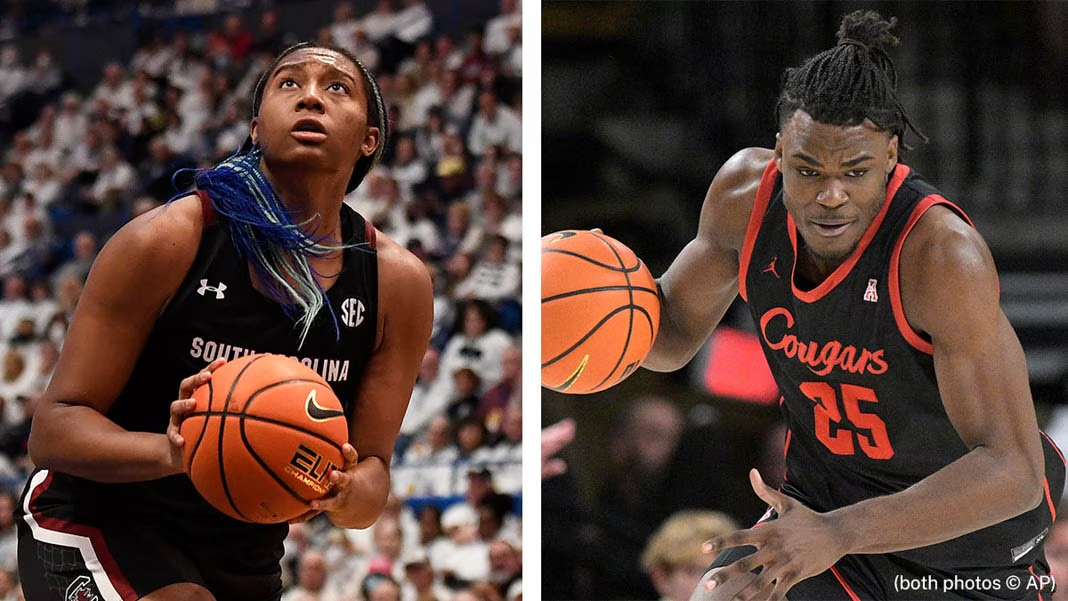It’s time again for March Madness in the United States. That is when millions of people throughout the country become devoted college basketball fans.
Why? Because March is the month when the National Collegiate Athletic Association (NCAA) men’s and women’s basketball tournaments are played.
The first men’s NCAA basketball tournament was played in 1939. The tournament was a modest event. Only eight teams competed, and the championship game was played in a half-empty arena at Northwestern University.
Gradually, however, the tournament grew because of television coverage and because the games became a showcase for such basketball legends as Kareem Abdul-Jabbar, Michael Jordan, Larry Bird and Stephen Curry. Now, the men’s tournament comprises 68 teams playing over a three-week period in more than a dozen arenas around the country.
This year the so-called Final Four — the final games among the four top teams — will be held in NRG Stadium in Houston. The stadium, which is the home of Houston’s professional (American) football team, can hold 71,000 basketball fans.
March Madness is a truly national event. At the beginning of the season, each of the roughly 350 Division I college basketball teams has a chance to make the so-called “Big Dance.” During the tournament, millions of people watch the games — every game is televised — and root for their school or state’s team.
The tournament format — a single-elimination system similar to the knockout rounds of the World Cup soccer championships — is another reason the tournament is so popular. The winner of each game advances, while the loser goes home. Every game is a dramatic “do-or-die” contest that can go down to the final seconds.
The tournament is usually dominated by big schools that spend millions on athletic facilities and salaries for top coaches. This season, such traditional basketball powers as the University of Alabama, the University of Houston and Purdue University, as well as the defending champions from the University of Kansas, are expected to do well.
Sometimes, however, smaller schools (so-called “Cinderella” teams) upset bigger, higher-ranked schools, creating some of the tournament’s “madness.” In 2018, the University of Maryland, Baltimore County, shocked the Number 1 team in the country, the University of Virginia, by beating them in the first round of the tournament. It is still the only time a Number 1 team has lost in the opening round of the men’s tournament.
In recent years, the women’s NCAA Tournament has become more popular as interest in women’s sports in America has grown. The women’s national championship tournament started in 1972 and was run by an organization called the Association for Intercollegiate Athletics for Women (AIAW).
In those early years, small schools such as Immaculata College in Pennsylvania (now Immaculata University) and Delta State University in Mississippi won the championships.
The women’s NCAA Tournament now features a field of 68 teams and, like the men’s tournament, is played in large arenas and dominated by bigger schools. This season, such traditional powerhouses such as the University of South Carolina, the University of Connecticut and Indiana University are expected to move on to the championship games in Dallas.
South Carolina, which is led by head coach and three-time Olympic gold medallist Dawn Staley, has a chance to finish the season undefeated. Staley’s team is last year’s NCAA champion and won 32 straight games during the regular season this year.
Like many college basketball teams in the United States, the South Carolina women’s team features players who were born outside the United States. Kamilla Cardoso (Brazil) and Laeticia Amihere (Canada) play for Staley.
Every March, basketball fans enjoy competitive games between the best college players, teams and coaches. But there is always a chance that some little-known player from a Cinderella team will surprise the favourites. That is just part of the fun of March Madness.












